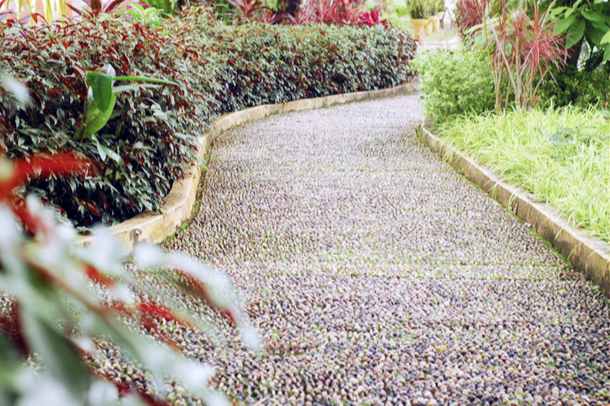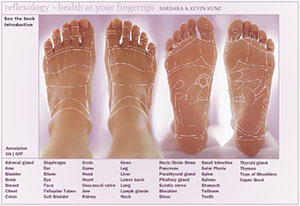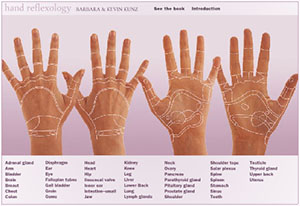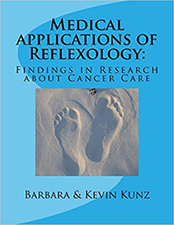Paralysis
“Jimmy, are you moving your fingers?” It was a question asked of a client during the course of simultaneous hand and foot reflexology sessions. Since he was a quadriplegic, this, moving fingers, was not supposed to happen. His answer would change our lives and chart a new direction for reflexology.
His answer was, “No, Kevin is.”
Kevin’s reflexology work on a particular part of left the foot prompted movement of the fingers of Jimmy’s right hand, a cross-over effect. This was repeatable. The same phenomena was observed with two paraplegic clients. Their prompted movement was of the opposite foot. Also observed were effects on the internal workings of the body: sweating, grumbling of the intestines and shivering with reports of no sensation of cold.
Jimmy’s answer lead us to an answer for the question, how does reflexology work? As we would discover, pressure whether prompted by a footstep or reflexology technique application creates a reflex response throughout the body. Impacted by pressure to the feet are the workings of internal organs and the musculoskeletal system. Over time impacted are stress-related health concerns, well being and improved operating systems of the body.
Learn more
Why would this be?
Why would this response to reflexology work occur? The answer came one Sunday when Barbara was reading a physiology book. She discovered the concept of proprioception, the body’s ability to sense pressure, stretch and movement, especially important was deep pressure to the bottoms of the feet. It was a Eureka moment. Kevin had been studying how a footstep happens in detail. Combining the proprioception and the footstep, we had our theory.
We had tapped into deep pressure sensors in the bottoms of the feet, stimulating a part of the body’s walking mechanism. As we found out, internal organs work together with pressure sensors in the feet to help manage the body’s energy expenditure, its metabolism. Pressure sensors communicate whether one is sitting or standing or walking, each requiring a different level of energy expenditure.
We realized what we saw was a reflex effect, automatic, unconscious responses of the body’s as pressure was applied to the feet. The value of pressure to the feet was its ability to contribute to balancing basic states of readiness, both muscle tone and tone of the autonomic nervous system (fight or flight and rest and relax).
We had our basic theory explaining what we had observed with paralyzed individuals. For individuals with spinal cord injuries and thus damaged nervous systems, the impact of pressure to the feet were observable. The random spasming of an opposite limb within six months had become movement, mimicking opposite limbs moving during a footstep. The sweating, growling stomach, and shivering were responses of the body’s operating system.
For those of us without major damage to the spinal cord, research and reports from individuals give a clue to responses to exercise of pressure sensors of the feet. As found in an analysis of 170 reflexology studies, the effects includes impact on how the body works, relaxation, pain reduction, and amelioration of symptoms for health concerns.
The reflex effect explained the impact of reflexology technique application: shaping health and responses from the inner self impacting lifestyle conditions, relaxation and walking abilities. Dosing was important: the systematic application of pressure to the feet over time best produced results.
A Call for Research
Over the years Kevin has worked briefly on the feet of other paralyzed individuals. The cross-over effects were observed similar to those noted during the Paralysis Project. Research conducted over time would demonstrate the potential of such work.
The Paralysis Project
A pilot study of the effects of foot and hand reflexology applied to paralyzed clients began in 1980. Foot and hand reflexology techniques were applied to a quadriplegic client and two paraplegic clients. The work consisted of 220 hours of sessions, 338 hours of sessions and 358 hours of sessions applied over a time period of three to five years.
From this work it was concluded: (1) A possible mechanism within the existing nervous system explains the workings of reflexology: the integration of autonomic-somatic information by the body. Such a mechanism allows the body to coordinate the involuntary internal reactions of the autonomic nervous system with the actions of the musculoskeletal system for the purposes of survival. (2) The application of pressure, stretch and movement technique to the feet can effect a physical change within the body. (3) An interruption of the body’s imaging process occurs in paralysis. The imaging can be changed by the exercise of locomotive components, pressure, stretch and movement.
A major observation was that pressure techniques applied to the feet elicited (1) what we came to recognize as a segment of the stride mechanism and (2) a direct response of the autonomic nervous system. Specifically, the spasming of paralyzed limbs in response to pressure applied to the feet of the paraplegic clients came to be conditioned into a series of sophisticated movements consistent with the positioning of hips, legs, ankles, and feet for walking. Pressure technique applied to one foot elicited movement of both limbs, each appropriate for a segment of stride in opposition to the other.
The response of the quadriplegic client differed from that of the paraplegic clients. Pressure technique applied to the sole of the foot, base of the toes of the left foot elicited movement of particular digits of the right hand, as if the client was playing a guitar. Responses were elicited from left foot to right foot and vice versa but paled in contrast to the left foot/right hand response.
Secondly, a stereotypical internal organ response was elicited in all three clients from general work on feet. The response varied from client to client but seemed to be internal body adjustments. One client shivered and her teeth chattered, yet when asked, she would report no sensation of being cold. One client perspired on one side of the head. One client perspired below the level of spinal cord injury and experienced intestinal tract grumbling. The responses developed over time and were extinguished over time.
Aside from immediate responses to reflexology work, none of the three clients experienced a bladder or kidney infection, a common occurrence, during the course of the work. In addition, the quadriplegic client experienced a gradual return of the ability to sense pain, heat, cold, light touch, and deep pressure. This ability varied over his body seemingly from dermatome to dermatome. The pain sensation developed into discrete localization of pain. He reported the ability to sense fullness in the stomach next followed by sensation of the need to empty the bladder.
Kunz Kevin, Kunz Barbara, “The Paralysis Project,” Reflexions, Vol. 8, No. 1, J/F/M 1987
What happened as a result of The Paralysis Project
The concept that the value of reflexology lies in the application of pressure to the feet opened up a new pathway for reflexology. There was now an explanation in the nervous system for the workings of reflexology:
- pressure technique applied to the feet stimulates an automatic, unconscious response of the autonomic nervous system
- X
- pressure technique applied to the feet stimulates an automatic, unconscious response of the walking mechanism
- X
- pressure technique applied to the feet stimulates postural musclesFurther results:
– a new definition, reflexology is the application of pressure, was createdby Kunz & Kunz and subsequently adopted by reflexologists andreflexology organizations around the world.
– idea: there is a key area of the foot important to impact on paralysisoccurring due to spinal cord injury and stroke.
– development of hand reflexology techniques.
Jimmy would go on to experience return of bowel, bladder and sexual function;s sense feeling, heat and cold on his legs and below his break; propel himself in a manual wheelchair instead of an electric one; write without a brace; and feed himself.









